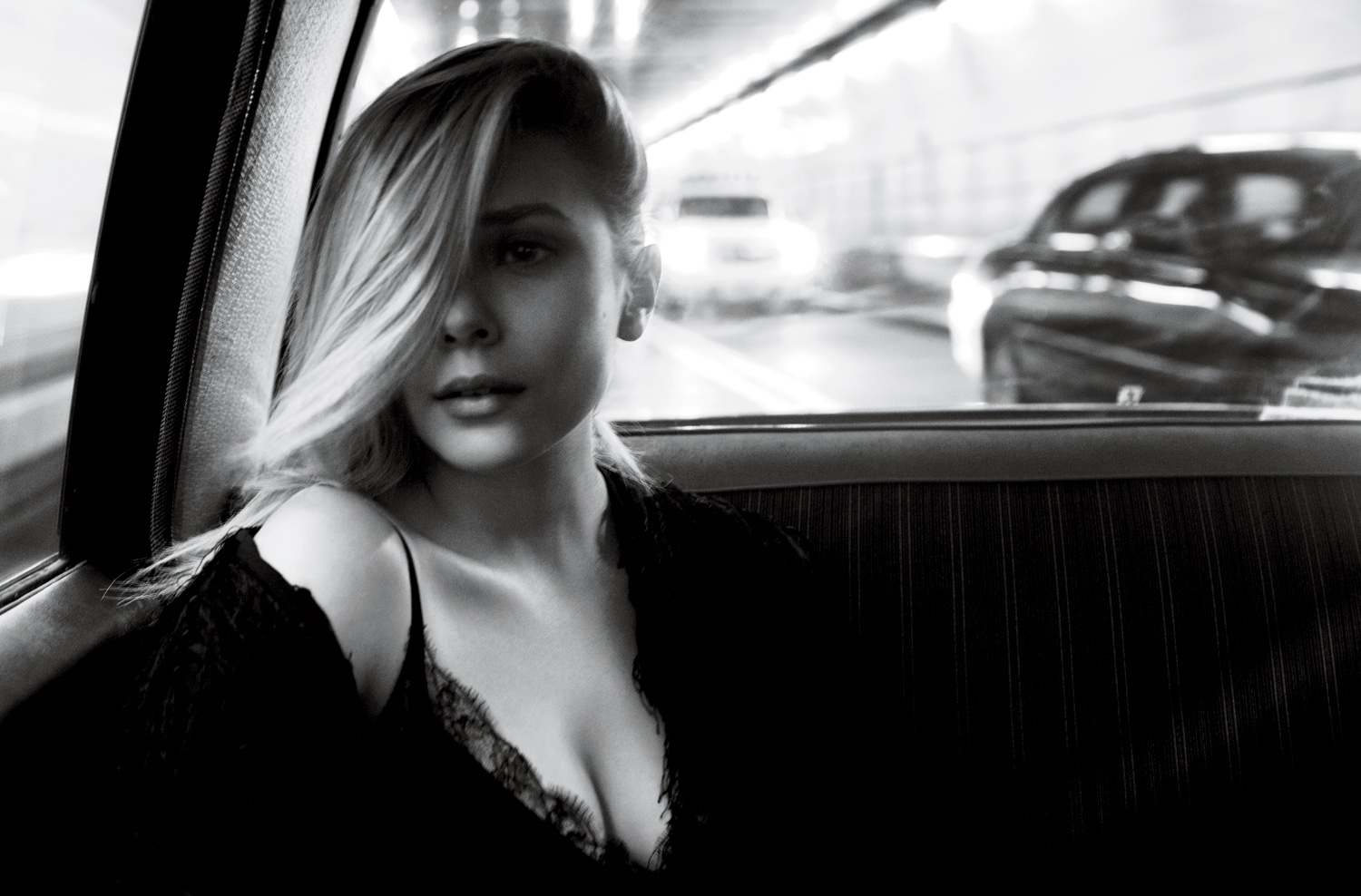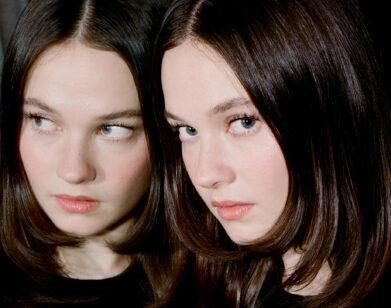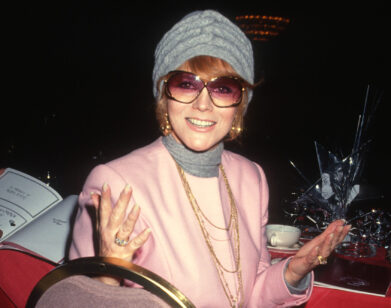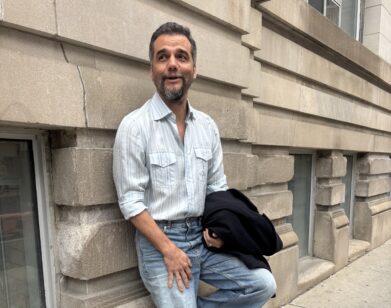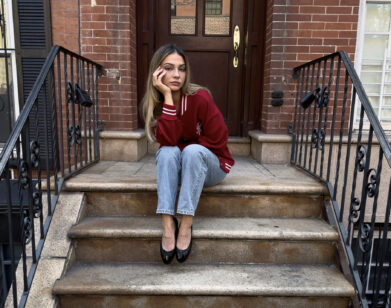Elizabeth Olsen
When a 21-year-old blonde actress with a famous last name was sighted in Park City, Utah, for Sundance in January 2011, the blogosphere lit up with an erroneous headline: “There is . . . Another . . . Olsen Twin . . . ” But by the time the festival wrapped, the conversation surrounding Elizabeth Olsen—younger sister of Mary-Kate and Ashley by almost three years—had shifted to her star turns in two harrowing indie dramas. In one, Silent House—a remake of Uruguayan director Gustavo Hernández’s 2010 film of the same name—she portrays a girl trapped in a decaying lake house that mirrors her mental state. The lo-fi horror feature, directed by Open Water (2003) duo Chris Kentis and Laura Lau, hits theaters next month. In Olsen’s other 2011 Sundance film, Martha Marcy May Marlene, for which Sean Durkin earned directing honors, she plays a possibly delusional young woman recently escaped from a cult who shakes up life at her sister’s pristine vacation house. As Durkin’s psychological thriller made the festival grand tour from Cannes to Toronto, the accolades for Olsen’s subtle performance as the troubled Martha piled up.
Although Olsen, now 22, has taken a (somewhat) slower path to celebrity than her child star–turned–fashion designer sisters, as she gears up for the awards season media blitz—and a very big 2012—her rising-star status is cemented. She had another double-header at Sundance this year with Rodrigo Cortés’s Red Lights, opposite Robert De Niro and Sigourney Weaver, as well as Josh Radnor’s Liberal Arts. In addition, she has signed on to star opposite Glenn Close in the period drama Thérèse Raquin.
Olsen recently sat down in her West Village apartment with Martha Marcy May Marlene costar Sarah Paulson.
Sarah Paulson: Did you watch a lot of TV as a kid?
Elizabeth Olsen: Yeah. Nick at Nite was, like, my favorite thing! I loved Laverne & Shirley. I think that was my favorite.
Paulson: Schlemiel!
Olsen: [laughs] Schlemiel!
Paulson: I love that you were a freaky little child watching Nick at Nite. When did you first know that you wanted to be an actress?
Olsen: I know I was younger than 8 because I started doing musical theater camps at that age. I would mimic what I saw in Grease and Guys and Dolls in front of my mom’s mirror and I would practice voices and songs. When you put me alone in a room, that’s what I would do.
Paulson: So you played well by yourself.
Olsen: Yeah. Actually, one time my mom tried to send me to my room for a time-out when I was 5 or 6, and I was like, “Fine! I like my room! All my imagination and toys are in my room!” I will never forget that. And she will never forget that.
Paulson: Watching your sisters go through what they did when they were young—and even now, with the paparazzi following them around and people talking about them in magazines—did that ever make you wonder whether you really wanted to go for it?
Olsen: Yeah, totally. First off, living in L.A., I was embarrassed to say that I wanted to be an actor. When I was 14 or 15, I was a really good volleyball player, so I thought, Well, maybe I’ll just get a scholarship to an Ivy League school through volleyball. Then I quit when I decided to focus on theater. I had a great drama teacher in high school, and that’s when I started to learn about the history of theater.
Paulson: Is there something in the water at your house out in the Valley that made it possible for your parents to spawn people who are very gifted at what they do? Is there something you were fed as a child that I can have?
Olsen: No.
Paulson: I don’t think it’s that common in families where you can say, “My sisters are the most genius clothing designers, and I’m actually getting to work and do what I love.” It doesn’t happen that much.
Olsen: My older brother Trent is actually the most talented one in the whole family, seriously. He is stupid talented. He made me watch and listen to and read everything he thought was cool. I think he thought he could mold my brain.
Paulson: It was interesting to him to have some say in how you saw things. Did he do that with your sisters, too, or just with you?
Olsen: Just with me.
Paulson: What does he do?
Olsen: He’s a writer. He’s trying to be a screenwriter.
Paulson: So if you could do any performance in the history of film that’s already been done, what would it be?
Olsen: Gone with the Wind [1939].
Paulson: You want to be Scarlett O’Hara?
Olsen: I don’t know if I want to play her, but it’s my favorite movie. I watch it all the time. I watched it yesterday morning. You know what I love about it—which is the reason I also love the character of Martha [in Martha Marcy May Marlene]—is that you want to hate Scarlett the whole movie, but you still want her . . .
Paulson: To succeed and to make it.
Olsen: Yeah. Because you see her goodness.
Paulson: So Vivien Leigh in Gone with the Wind.
Olsen: I couldn’t give that performance, though.
Paulson: What other performance have you witnessed and you sat there and thought—
Olsen: Faye Dunaway, Network [1976]. I would have loved to do that.
Paulson: That’s a really good answer.
Olsen: Or Parker Posey in Waiting for Guffman [1997].
Paulson: Okay, this is not a three-part question! You don’t get to answer three performances! You’ve worked with Jane Fonda, Catherine Keener, Sigourney Weaver, pretty amazing . . .
Olsen: Sarah Paulson.
Paulson: Sarah Paulson, yeah, I’m not lumping myself in with those women. I would never dare. And you’re about to work with Glenn Close. I want to know what you’ve learned from them. Is there anything in particular that stood out?
Olsen: Well, what was cool with Sigourney, and really with all of them, if she didn’t agree with something that she was asked to do, instead of just saying, “No,” because she knew her character so well, she would have a very intelligent conversation and say, “Yes, but this is where I am right now, this is where she is, and this is why I think this would happen . . . ”—just standing by her gut instincts and making her own choice without ever seeming difficult.
Paulson: That’s a very good thing to be.
Olsen: In my first movie, Peace, Love, & Misunderstanding, I didn’t realize I could tell the costume designer, “I don’t really want to wear this,” because I felt that was his job and I didn’t want to step on his toes. I didn’t realize that my job was to be part of a collaboration. Movies are in a much longer production conversation before an actor is even involved. I always thought of actors as the last piece of the puzzle—so you’re a tool.
Paulson: That’s hilarious.
Olsen: “I’ll do whatever you say!” But now I realize that in order for things to be good, everyone’s opinion really matters and counts. And with Martha I just happened to be on the same page with Sean [Durkin].
Paulson: You guys seemed to have a real shorthand with each other. It seemed like there was a tremendous amount of trust between you and a lot of respect, and I was sort of struck by it because I thought, Here is your second movie and it entirely rests on your tiny little shoulders.
Olsen: Which I never thought about once, by the way.
Paulson: Did you ever have a moment where you thought, Holy shit? Was there ever a moment where you felt overwhelmed by the gargantuan responsibility you have for this movie?
Olsen: No, because I was so ignorant.
Paulson: So the ignorance helped?
Olsen: Yeah. I was like, “I’ve played the lead in plays before.” It wasn’t an ego thing. And not really understanding the world of independent films, I thought that movies can just disappear and no one sees them, so I didn’t put any pressure on myself in that way.
Paulson: Where do you think your confidence to trust yourself comes from?
Olsen: What keeps you confident in a healthy way is knowing that everyone else around you is going to support you and teach you and you’re going to learn from them. I just feel open to learning from people.
Paulson: Confidence can sound like a dirty word, and it’s not. I think one of the most remarkable things about your performance in the movie is how still you are. I feel like a lot of performers are sometimes like, “Hey, look at me! Look at all my acting muscles.” I feel like it’s a trap that anyone can fall into. It’s hard not to try to do something in every scene. Sometimes there are shots of you just stirring a glass, and there have been times where I think, “Oh, I’m stirring this glass. What else can I be doing?” But in life we just stir a glass. We’re not thinking about how to communicate something. It was very powerful because it wasn’t showy. You were able to tell the story with a certain kind of stillness.
Olsen: Well, it’s funny because that’s what people say when they talk about the movie. They always talk about the restraint. I was too scared to push it far.
Paulson: Scared of what?
Olsen: To push something too far and make Martha crazy or act out more. And I know Sean didn’t want that. So it was really because of him, but also I had a fear of overacting because it was only my second project. Now I’m going to work on something that requires me to do so much more—Thérèse Raquin, the movie I’m doing with Glenn Close. The character of Thérèse—it’s almost like she’s drained of life, but then when she meets the right person she just becomes primal or carnal.
Paulson: Silent House is the film you did right after Martha Marcy . . . Is it true that the movie was shot in 17 shots?
Olsen: That’s so funny. I’m actually not sure how many it shot in. It could be fewer.
Paulson: Was it a very different experience from Martha?
Olsen: Yes. It was so difficult.
Paulson: Why was it more difficult?
Olsen: Because we rigged an entire house like a stage, like a haunted house. And it was me and the DP and the sound guy running around, and the DP had to wear funny shoes so he didn’t make so much noise when we were filming. We did long, long shots, and if we got 12 minutes into a shot and something went wrong, that whole shot didn’t matter. It didn’t count.
Paulson: Oh, my god, that’s crazy! That’s almost like doing a play.
Olsen: The thing that was frustrating was a lot of the time when we’d get it right technically, it was the 26th time we’d done it, so I looked like I’d been doing it for 12 hours. I would be so drained by the end of the day.
Paulson: That sounds incredibly exhausting.
Olsen: It was so exhausting. In hindsight, I can appreciate it and be like, “You know what? That was really difficult and I did it.”
Paulson: I can’t wait to see this movie.
Olsen: True fear for an hour and a half.
Paulson: Are you a horror fan?
Olsen: Yes.
Paulson: What scares you? And I mean in the largest sense and the smallest sense.
Olsen: Loneliness, but self-inflicted loneliness. I’m a very social person and I love being out in the world, and the feeling of not having that is the scariest thing to me.
Paulson: What do you think people would be surprised to know about you?
Olsen: I just think my family is so normal, but no one wants to accept that. I find my family to be normal because there’s an understanding of what every job entails. And it is a job. It’s not this fantasy that Hollywood and movies are all glitter and stardust. That’s the most realistic view.
Sarah Paulson is a Golden Globe–nominated actress who appears in the forthcoming HBO film game change.

